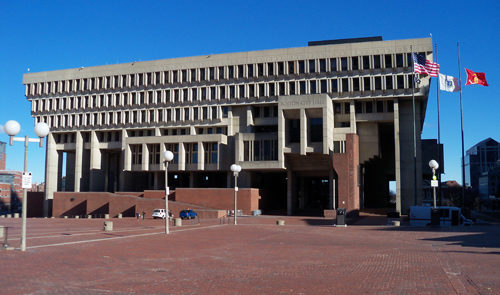
On a guided tour of Boston, one might approach the city hall to hear the warning, “Here it is, ladies and gentlemen, the ugliest building in the world!” Boston City Hall — an imposing structure of concrete slabs and gaping space — was completed almost 50 years ago, and its reception has never not been complicated.
In 1962, the mayor of Boston had put forth a competition challenging architects to submit design ideas for a new city government building. The contest came after years of a stagnant economy, white flight, and rampant corruption in the city. The architects Gerhard Kallmann and Michael McKinnell, two Columbia University professors, submitted their design amongst 255 other entries to be judged by a jury of professionals and entrepreneurs. A design competition for a public building was an anomaly in the U.S., the last one having been around the turn of the century.
When Kallmann and McKinnell’s ambitious winning model was revealed from under a white sheet at the Museum of Fine Arts in May of 1962, someone in the crowd reportedly uttered, “What the hell is that?”
A conundrum to many, the city hall was a modernist vision in the vein of the “brutalist” architecture of Europeans like Peter and Alison Smithson and Le Corbusier. Although the term, out of context, may evoke violence, brutalism is descended from a host of linguistic lineages including the French béton brut (raw concrete). Modern concrete architecture had ethical implications since many of the European incarnations of the movement had come in the form of low-cost or public housing. In a similar spirit, Boston City Hall aimed to embody civic transparency and urban renewal, according to Chris Grimley, co-author of Heroic: Concrete Architecture and the New Boston. This contrasted sharply with the glass, capitalist towers of Madison Avenue in New York.
So why did everyone hate the concrete city hall?
Well, not everyone: there was a clear dichotomy in public reaction. Architecture enthusiasts and academics praised the boldness and authenticity of the building, while a 1970s survey of regular Bostonians found “cold,” “overbearing,” and “monstrous” to be the most common reactions. In 2006, Boston mayor Tom Menino proposed selling or demolishing the city hall, citing the “wasted space” of the surrounding 11-acre plaza and the aesthetic of the edifice that’s more akin to a bunker or, possibly, a handball court.
Menino’s pitch didn’t come to pass, however. Despite the widespread hatred of Boston City Hall, the overarching opinion seemed to be that it possessed a historical significance that should be preserved. This could be a self-fulfilling prophecy. Chris Grimley says, “The longer a building is up, the better chance it has to go through the process of, first, being considered an eyesore, then to enter into an age of new appreciation.” Grimley believes we should look at concrete architecture with a more measured sensibility.
Brutalism might be back in vogue after all. Several factors could be contributing to concrete architecture’s newfound popularity: first, the threat of demolition. Nothing rallies supporters like the permanency of art extinction. Grimley says members of Generation X have grown up around these buildings, and they’ve, perhaps, developed more complex sentiments toward the style than their parents.
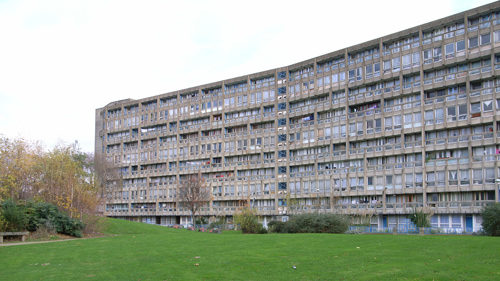
The Robin Hood Gardens in London was demolished last year despite an effort by high-profile architects like Zaha Hadid and Richard Rogers to conserve the housing complex. The campaign SOS Brutalism has tasked itself with compiling a database of vulnerable concrete “monsters” all over the world. Since most examples of the architectural style were built in the ’50s and ’60s, most brutalist structures are confronting middle age — and the need for upkeep. Contrary to turn-of-the-century notions, concrete is not indestructible.
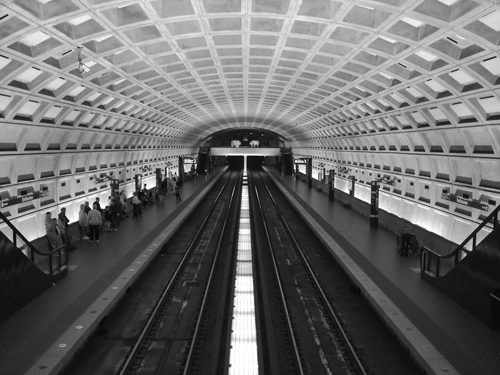
How to go about preserving the tough architecture is another issue. Washington D.C. Metro found itself triggering outrage from architecture enthusiasts when they started painting over the iconic concrete arches in Union Station with white paint last March. The local chapter of the American Institute of Architects requested that the paint job cease immediately.
Another appealing aspect of brutalism is the photogenic quality of the work. With its sharp lines and defined shadows, concrete architecture photographs well. Instagram accounts like @brutopolis and @brutal_architecture and a blog called F*ck Yeah Brutalism curate concrete photography for the social media age.
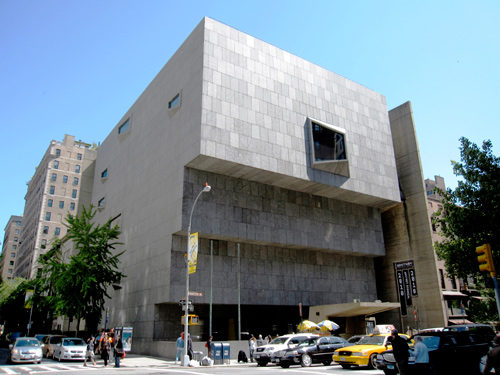
But will the aesthetic appreciation for brutalism hold up? Architect Michael Kubo predicted last year that it would, in the way that “you might not want to wear your parents’ clothing, but your grandparents’ clothing is suddenly cool again.” In 2016, the Metropolitan Museum of Art opened the Met Breuer at the former — quite brutalist — site of the Whitney Museum on the Upper East Side. The same year, a film adaptation of J.G. Ballard’s novel High Rise was released, setting the dystopian thriller in a concrete skyscraper. With so many critical and cultural treatments of brutalism, everyone from The Guardian (“Why Brutalist Architecture is Back in Style”) to The New York Times (“Brutalism is Back”) predicted a revival of the postwar style. Even McSweeney’s Internet Tendency hopped on the trend with a satirical imagining of HGTV’s “Fixer Upper.”
Chris Grimley and Michael Kubo’s book, Heroic: Concrete Architecture and the New Boston, calls for a reinterpretation of brutalism. In fact, they would rather the style be called “heroic.” Grimley says, “The hero is a flawed figure. We acknowledge that, in the radicalness of the moment, mistakes and errors were made, but we want to take a more nuanced look at the work.” Still, the pair, along with their co-writer Mark Pasnik, maintains that postwar concrete architecture was civically-minded and instigated, and that the larger story of the work is about urban reinvention.
Whether concrete has staying power — this time around — remains to be seen. Does anyone want to live and work in these structures, or do they only convey a freakish allure? In the case of Boston City Hall, mayor Martin Walsh chose to liven up the difficult design with a pretty simple fix: LED lights. In 2016, Walsh unveiled the new lighting project that he hoped would rejuvenate the public space for a new generation, and perhaps showcase the versatility of concrete. Now, the “ugliest building in the world” shines in the hue du jour, and it will escape demolition for the time being.
Become a Saturday Evening Post member and enjoy unlimited access. Subscribe now
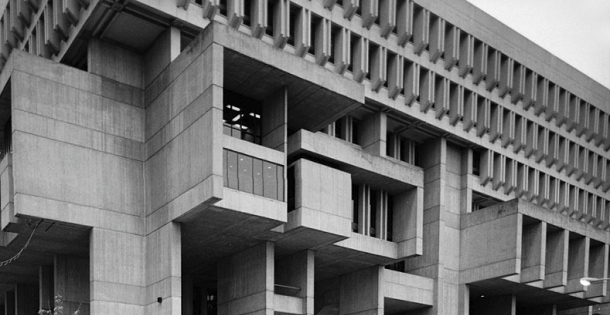



Comments
Nicholas, I never heard of ‘Brutalist Achitecture’ before this feature. Thanks for the various links you included. As far as some of the building photos included here, I rather like Boston City Hall, the Washington D.C. Metro and the Met Breuer. Robin Hood Gardens not so much, but am sorry it was demolished last year.
The first three I mentioned have an avant-garde quality I like, but realize it’s not for everyone. I know I’m still getting used to the looks of the Disney Concert Hall in Downtown L.A., 15 years later. The inside is beautiful and has a strong art deco influence.
Personally, my favorite type of architecture is Googie; a Southern California exclusive heir apparent to art deco, that could only have come after World War II. The postwar car culture, jet, space and atomic age all coming together in a spectacular way during the peak years of the 20th century.
These influences resulted in beautiful buildings both inside and out with upswept roofs, boomerang shapes, neon, rocket ships and more. The back ends of automobiles too, including the ’59 Buick, Chevy, Dodge and Cadillac, of course. Then it all went away. Nowadays I still appreciate seeing the few remaining reminders of those buildings, even if they are run down or in ruin.